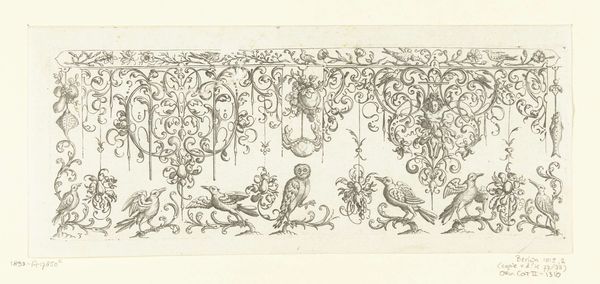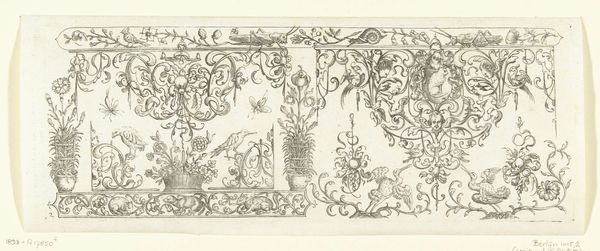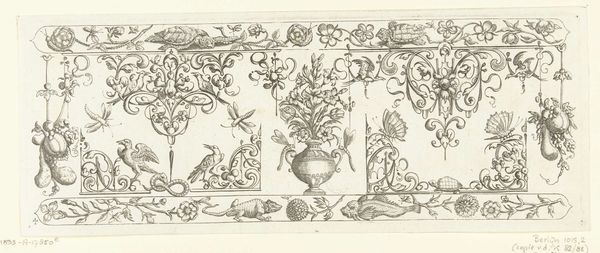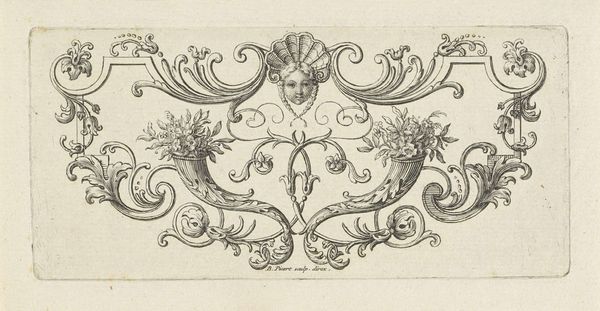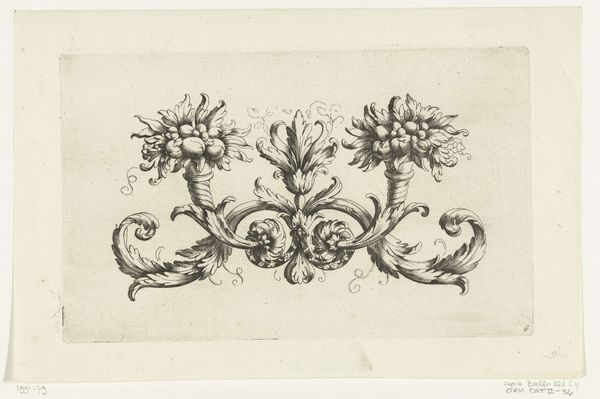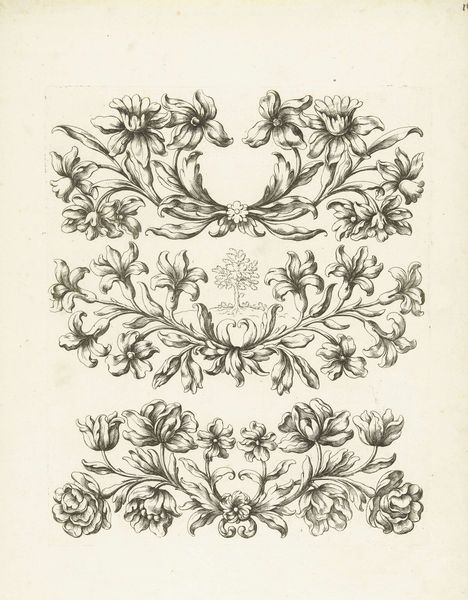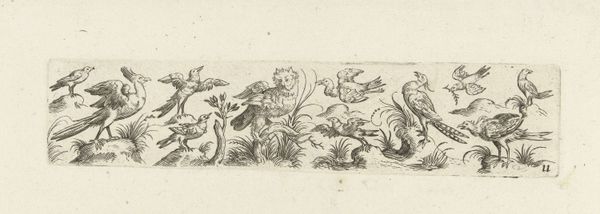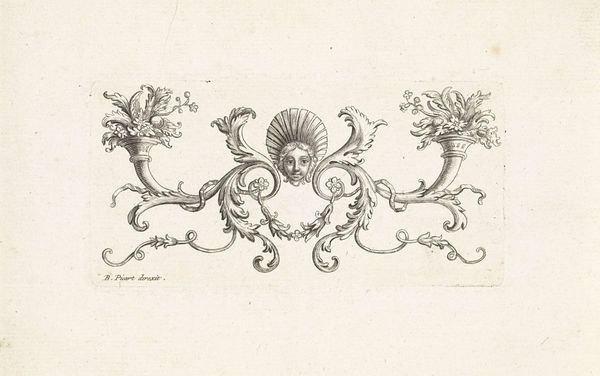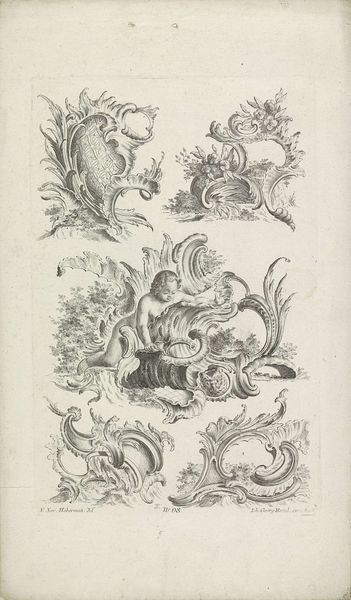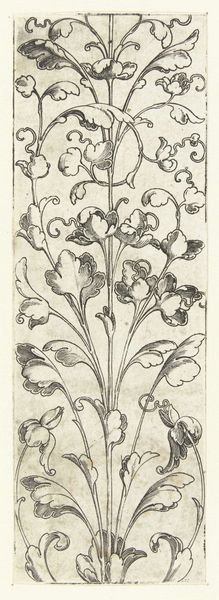
print, engraving
#
baroque
# print
#
figuration
#
form
#
line
#
decorative-art
#
engraving
Dimensions: height 78 mm, width 209 mm
Copyright: Rijks Museum: Open Domain
Curator: Standing before us is "Garlands with Fruit and Cherubs," a print made after 1611. Editor: It strikes me immediately as a masterclass in delicate intricacy. The artist’s command over line and form is extraordinary! The monochrome scheme invites close viewing, as if daring the eye to trace every twist. Curator: Absolutely. The Rijksmuseum holds this piece, giving us insight into decorative arts and printmaking practices of the period. Consider the role such prints played, likely models for artisans in various trades. They're not necessarily "high art" in the traditional sense but crucial for understanding broader artistic production. Editor: The organization into repeating yet asymmetrical sections creates a delightful sense of movement, and this dynamism plays cleverly off the static flatness of the picture plane, achieved through masterful illusionism of depth with hatching techniques. And the iconography - fruit, cherubs, birds... Classic allegories that lend themselves to decorative application. Curator: Right, consider that fruit wasn’t just for show. Certain types had symbolic meaning connected to wealth, power and piety. Think about access to exotic produce back then. Also, let's look at the material properties. This is an engraving; it necessitated technical skill to produce reproducible designs—implicating networks of labour and distribution. It speaks of accessibility. Editor: A fruitful insight, yes, though its pure artistry lies in its flawless symmetry, where, even in slight disruptions, they provide energy and forward thrust. The balance is superb, preventing what might otherwise seem like cluttered excess, even down to where the Cherubs are located. Curator: To me, that placement signals function meeting aesthetic appeal. What was the artist’s socio-economic position, how did workshops operate to supply these visual templates, and to what extent were consumers actively adapting these print designs for unique creations? Editor: All these points further deepen one’s appreciation. Now I'm noticing how these designs might translate so well onto porcelain, plaster, even textiles. The print transforms the act of decoration from a static activity to dynamic visual discourse. Curator: Examining 'Garlands' reveals hidden networks that underline the development of art itself, of how something both decorative and ‘minor’ reflects broader systems of labour and material circulation. Editor: This print invites more than a passing glance: it insists on observation. I must add to the already-mounting heap of compliments towards its composition a respect to the way each visual element reinforces and adds dimension to one another. A masterpiece, certainly.
Comments
No comments
Be the first to comment and join the conversation on the ultimate creative platform.
